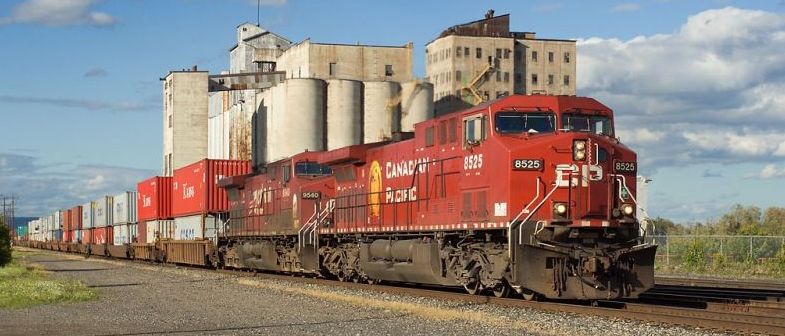
Train Addiction Help Line: 1.866.840.7777
MTH - Premier - O Scale 3-Rail - 75 ft Depressed Flat Car w/Transformer - Chesapeake & Ohio - (White/Black) (SKU 507-2095253)
Available On: January 1, 2018

For transporting large or heavy items over land, nothing beats a railroad flat car. No wonder that manufacturers use flat cars to ship products or sub-assemblies ranging from transformers to airliner fuselages to heavy construction and mining equipment.
But how big is too big? That is determined by a railroad's loading gauge, which defines the maximum height and width of rolling stock and engines. Great Britain, the birthplace of railroading, has one of the smallest loading gauges because so much of its network has bridges and tunnels built in the mid-1800s, when trains were smaller. In the US, older, more urban eastern roads tend to have smaller loading gauges than western roads that traverse wide-open spaces. That's why, for example, 1950s-era vista-dome passenger cars were common on western railroads but rare in the east.
Today the Association of American Railroads (AAR) defines loading gauges in terms of Plate designations from B to K, with the Plate C height of 15'6" being the most common. The tallest North American loading gauges are the Plate H requirement for double-stack container cars and the Plate K requirement for Autoracks, both 20'2".
Over the years, flatcar designers have devised various means of squeezing the most inside a loading gauge, with one of the most popular being the depressed center flat car. Dropping the car floor down, until it almost touches the rails between the car's trucks, allows room for larger loads like the huge power transformer depicted by our model. Additional trucks are also used to spread out the weight on this four-truck car, to keep the tonnage on each axle within the maximum allowed axle loading on the rails. An even more dramatic solution is the Schnabel car, also modeled in our Premier line, in which the load becomes part of the structure of the car, and can even be shifted side-to-side to clear lineside signals and structures. But where the Schnabel car requires its own dedicated slow-speed train, depressed center flat cars can travel as part of a normal freight consist.
MTH Premier O Scale freight cars are the perfect complement to any manufacturer's scale proportioned O Gauge locomotives. Whether you prefer to purchase cars separately or assemble a unit train, MTH Premier Rolling Stock has the cars for you in a variety of car types and paint schemes.
Virtually every sturdy car is offered in two car numbers which makes it even easier than ever to combine them into a mult-car consist. Many of MTH's Premier Rolling Stock offerings can also operate on the tightest O Gauge curves giving them even more added versatitlity to your layout.
Features:

$74.95 US